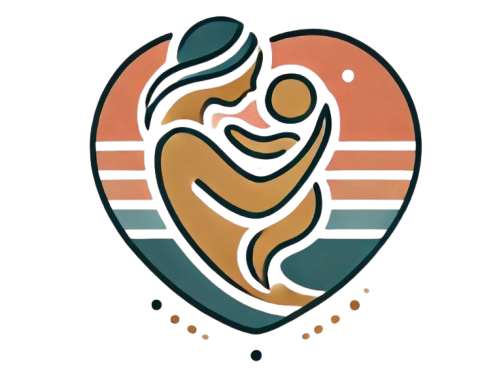Postpartum Recovery Guide: How to Heal Faster After Birth

The journey to motherhood is a transformative experience, but it also involves navigating the challenges of postpartum recovery. Healing after birth can vary greatly depending on individual circumstances, but understanding the ways to expedite this process is crucial for new moms. As the discourse around maternal health continues to evolve, focusing on effective postpartum healing tips is more relevant than ever.
Postpartum recovery is not just about physical healing; it encompasses mental and emotional well-being as well. Ensuring a faster recovery after childbirth can enhance a mother’s ability to care for her newborn and herself. This guide will delve into practical measures for new mom recovery, addressing both physical and emotional aspects. From breastfeeding vs. formula pros and cons to self-care practices, we aim to provide a comprehensive postpartum care guide.
Understanding the Physical Recovery Process
The physical aspects of postpartum recovery are often the most immediate and tangible challenges a new mother faces. The body undergoes significant changes during pregnancy and childbirth, and understanding these changes can aid in healing after birth. The first six weeks postpartum are typically considered the primary recovery period, although full recovery can take longer.
Postpartum Bleeding and Uterine Contractions
After childbirth, it is normal to experience postpartum bleeding and uterine contractions. This process, known as lochia, involves shedding of the uterine lining and can last up to six weeks. It’s important for new mothers to have adequate supplies such as maternity pads and to monitor the bleeding for any unusual patterns that might require medical attention.
Uterine contractions, or afterpains, help the uterus shrink back to its pre-pregnancy size. These can be particularly noticeable during breastfeeding, as the release of oxytocin aids this process. Staying informed about these experiences can alleviate concerns and promote a smoother recovery.
Perineal and C-section Recovery
For those who have experienced a vaginal birth, perineal care is essential. Keeping the area clean and using ice packs can relieve discomfort. Sitz baths are also recommended to promote healing. Mothers recovering from a C-section will have additional considerations, such as managing the surgical wound and avoiding strenuous activities.
Real-world data from healthcare providers suggest that gentle movement and hydration can significantly aid in recovery, regardless of the birth method. Consulting with a healthcare professional can provide personalized strategies to enhance physical recovery.
Emotional and Mental Well-being Postpartum
The emotional journey of postpartum recovery is just as important as the physical. Hormonal changes, sleep deprivation, and the adjustment to new responsibilities can impact mental health. Recognizing these challenges and seeking support can improve overall well-being during this period.
Recognizing Postpartum Depression
Postpartum depression affects approximately 10-20% of new mothers. It’s crucial to distinguish between “baby blues,” which are temporary, and more severe symptoms of depression. Symptoms may include persistent sadness, anxiety, and difficulty bonding with the baby. Early intervention with counseling or medication can be beneficial.
Sharing experiences with support groups or online forums can also provide comfort and practical advice. Communities focused on postpartum wellness emphasize the importance of mental health in the recovery process.
Creating a Supportive Environment
Building a support network is a vital aspect of emotional recovery. Family, friends, and professional services can offer assistance and respite. Encouraging partners to be actively involved in caregiving can alleviate some of the pressures on new mothers. Structured routines that include time for self-care can also make a significant difference.
Data from studies on postpartum care guide the development of supportive strategies, highlighting the role of community and healthcare professionals in promoting mental health.
Nutrition and Lifestyle Tips for Faster Recovery
Nutrition and lifestyle choices play a critical role in postpartum recovery. A balanced diet and gentle physical activity can enhance healing and provide the energy needed for caring for a newborn.
Breastfeeding vs. Formula Pros and Cons
Deciding between breastfeeding and formula feeding is a personal choice that impacts nutritional intake and recovery. Breastfeeding offers numerous benefits, such as promoting uterine contraction and providing antibodies to the infant. However, it can also be physically demanding and may not be feasible for all mothers.
Formula feeding can offer flexibility and allow other caregivers to participate in feeding, which can be beneficial for recovery. Consulting with healthcare providers can help in making an informed choice that best suits individual circumstances.
Nutrition for Postpartum Healing
A nutrient-rich diet is essential for recovery. Focus on foods high in protein, vitamins, and minerals to support tissue repair and energy levels. Hydration is equally important, especially for breastfeeding mothers. Incorporating foods like leafy greens, lean proteins, and whole grains can aid physical recovery and boost overall wellness.
Real-world examples of meal plans and recommendations from nutritionists can guide mothers in making healthy choices that support faster recovery after childbirth.
To further enhance your understanding of postpartum recovery, consider exploring video content that offers step-by-step guidance on exercises and self-care practices. Visual demonstrations can be particularly helpful in implementing these tips effectively.

Frequently Asked Questions
How long does postpartum recovery typically take?
The primary postpartum recovery period lasts about six weeks, but complete recovery can take several months. Factors such as birth method, individual health conditions, and support systems can influence the duration.
What are effective ways to manage postpartum pain?
Effective pain management strategies include using prescribed medications, applying ice packs, and engaging in gentle exercises. Consulting with a healthcare provider for personalized pain management plans is advisable.
What are some signs of postpartum depression?
Signs of postpartum depression include persistent sadness, anxiety, changes in eating or sleeping patterns, and difficulty bonding with the baby. If you experience these symptoms, seek professional help promptly.
How can partners support postpartum recovery?
Partners can support recovery by sharing caregiving responsibilities, providing emotional support, and encouraging the mother to rest and practice self-care. Open communication about needs and expectations is also crucial.
What are good dietary choices for postpartum recovery?
A balanced diet rich in proteins, vitamins, and minerals supports recovery. Foods such as lean meats, dairy, fruits, vegetables, and whole grains are beneficial. Staying hydrated is also essential, especially for breastfeeding mothers.
Conclusion
Postpartum recovery is a multifaceted process encompassing physical, emotional, and mental health. Understanding and addressing these aspects can lead to a smoother transition into motherhood. Key strategies include managing physical recovery, supporting mental health, and making informed dietary and lifestyle choices.
Next steps involve seeking support when needed, engaging in self-care, and staying informed about postpartum wellness. Remember, every mother’s journey is unique, and personalizing recovery strategies is vital to achieving optimal health.
For those seeking further insights, explore our complementary topics on breastfeeding vs. formula pros and cons, postpartum exercise routines, and mental health resources for new moms.




